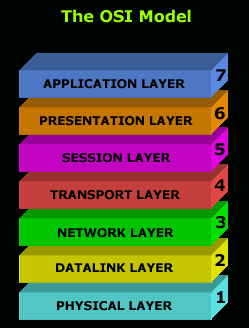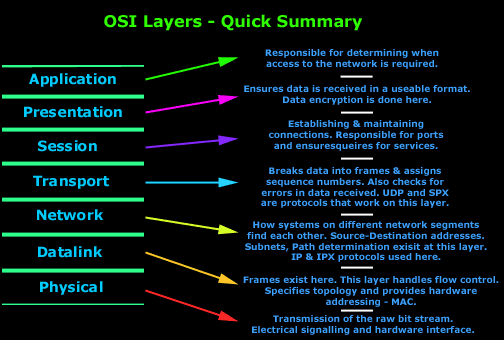
Introduction To The Open Systems Interconnect Model (OSI) Introduction
OSI is a standard description or "reference model" for how messages should be transmitted between any two points in a telecommunication network. Its purpose is to guide product implementors so that their products will consistently work with other products.
The Model

The OSI model was created by the IEEE committee so different vendors products would work with each other. You see the problem was that when HP decided to create a network product, it would be incompatible with similar products of a different vendor e.g IBM. So when you bought 40 network cards for your company, you would make sure that the rest of the equipment would be from the same vendor, to ensure compatibility. As you would understand things were quite messy, until the OSI model came into the picture.
As most would know, the OSI model consists of 7 layers.
Each layer has been designed to do a specific task. Starting from the top layer (7) we will see how the data which you type gets converted into segments, the segments into datagrams and the datagrams into packets, the packets into frames and then the frames are sent down the wire, usually twisted pair, to the receiving computer.

When you're finished reading through the OSI model, to understand how data travels through the layers and clearly see the header which each layer add\removes, visit the Data Encapsulation - Decapsulation page.